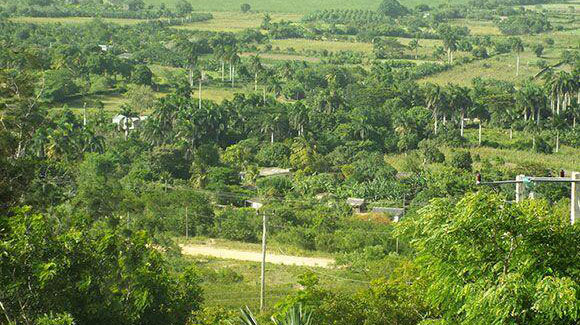
At 124 meters above sea level, right on the road that connects the municipality of Las Tunas with that of Manatí, in the north of the province, El Cerro de Caisimú (The Caisimú Hill) rises, one of the main elevations of the local geography, characterized by its vast plains.
Plagued by innumerable myths, aboriginal legends and popular anecdotes, the Hill was also the scene of numerous actions during the independence feats, until it had one of the most popular facilities of the Provincial Company of Popular Camping in this territory.
They say that it owes its name in the indigenous language to the Cacicazgo de Boyuca, later called Cacicazgo de Manatí, and that - according to history records - an aboriginal man named Caisimú lived on that hill, which is why his name persists to this day.
It was there that Major General Vicente García González, the main figure in the independence struggles in Las Tunas, located one of his camps in 1871, and six years later he met with Colonel Francisco Varona at this elevation, to give him precise orders to attack the Fort of La Loma, in Puerto Padre.
A century later the Hill received the visit of the Commander in Chief Fidel Castro Ruz in order to deserve the province the honor of hosting the main activities for July 26 in 1981, and even that of the national poet Nicolás Guillén days later, who were impressed by the beauty that since there it could be seen.
The truth is that the small, but enigmatic mountain already had its piece of history, reserved for the most modern times, because the inhabitants say that during the liberation war that Fidel led with the Rebel Army, an old woman promised that if the Cuban Revolution triumphed would build a hermitage to the Virgen de la Caridad del Cobre, Patroness of Cuba, on that elevation.
At the beginning of the 60s of the last century, the oath was fulfilled and until today the locals and visitors deposit their faith, pay tribute and materialize promises in the small sanctuary located at the Camping base that was inaugurated there in 2005.
Recently used as an isolation center in the midst of the confrontation with the new SARS-CoV-2 coronavirus, which causes the COVID-19 disease, the facility welcomed travelers and contacts of people, a context in which this altar of the Virgin served as a fortress to Health and support professionals who worked there in the face of the complex epidemiological situation.
An infrastructure consisting of 38 rooms and three caneyes, the latter conceived as a sui generis imitation of typical aboriginal constructions, are complemented by the swimming pool service, rental of sports equipment, dance floor, games room and quality service that makes the become natural viewpoint unique.
With an area of 0.42 square kilometers, El Cerro de Caisimú exhibits a fauna in which birds such as pigeons, mockingbirds and woodpeckers abound, in addition to the larger cattle that characterize one of the economic activities of the area.
The royal palm, the national tree of Cuba, ceibas, guásimas, majaguas, coconuts, mangoes, and cashew, are some of the exponents of the vegetation of the place.
In the preference of national and foreign visitors, Cerro de Caisimú is identified as a natural paradise of the geography of Las Tunas that is committed to captivating those who decide to get away from stress and live an experience that combines beauty, history and fun.





